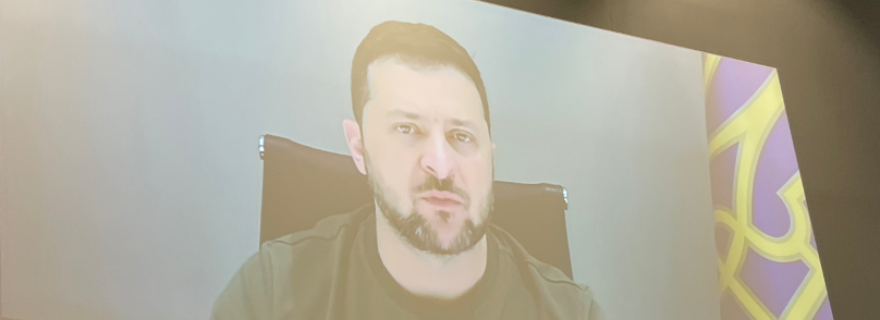Can rhetorical action open the door to the next EU enlargement? A debate revisiting a great book
A recent debate published in the Journal of European Public Policy revisits the role of rhetorical action in EU decisions on Ukrainian candidacy and potential membership. The debate revisits Frank Schimmelfennig’s seminal book "The EU, NATO and the Integration of Europe: Rules and Rhetoric".
In the spring of 2022, a few months after the start of Russia’s full-scale war against Ukraine, EU member states were preparing to take some momentous decisions in response to Ukraine’s application for EU membership. A number of member state governments, among them the Dutch government led by Mark Rutte, were skeptical or downright negative towards opening the door for Ukrainian membership. Following a speech by Rutte for the Ukrainian parliament in which he was non-committal on Ukraine’s candidacy, President Zelenskyy reported asking him to say publicly whether the Netherlands does not see a place for Ukraine in the EU. This was a typical example of Zelenskyy’s approach to the multiple hurdles encountered by Ukraine’s application, submitted just five days after the start of the Russian invasion. Zelenskyy resorted to ‘rhetorical action’.
Rhetorical action is a process whereby actors use strategically norm-based arguments and references to Community rules and values to overcome deadlock. Rhetorical entrapment can follow, that is the commitment by leaders to arguments congruent with the values of a given community. Rhetorical entrapment was, according to Frank Schimmelfennig’s influential book, the explanation why western leaders agreed to the EU’s eastern enlargement when they preferred only trade via association. Various contributions to the JEPP debate explore the role of rhetorical action in the decisions of the European Council on enlargement and in the broader setting of a world dominated by geopolitics. It is possible to demonstrate that aspects of rhetorical action, namely references to shared values, have been used not only by President Zelenskyy, but also by the leaders of European institutions, such as Ursula von der Leyen and Charles Michel, as Dimitrova shows in her contribution. Zelenskyy’s appeals for Western support against Russia and arguments for Ukrainian membership have emphasized heavily the congruence with the European community of norms and shared identity. At the same time, even as we witness the power of such appeals, we can observe, as argued by Thomas Risse, that the success of rhetorical arguments depends on whether the opponents of EU enlargement share the community identity of the EU as a club of liberal democracies. There must be, Risse stresses, some basic socialization in community norms for instrumental interests to be overcome. Today, he argues, opponents of the EU as a community of liberal democracies may not be swayed by appeals to some ‘community ethos’. In addition, Sedelmeier’s contribution provides an empirical test of rhetorical action as a theory by examining vetoes to enlargement throughout the history of enlargement. Especially the vetoes on North Macedonia’s candidacy from Greece, France and most recently Bulgaria do not conform to community norms and cannot be explained by the framework of rhetorical action.
Ultimately, even as they disagree, the contributions to the debate on rhetorical action illustrate the usefulness of revisiting the mechanism as an explanatory theory for certain processes in European integration, i.e. enlargement. At a time when the EU member states are far from unanimously agreed on the next steps towards enlargement, rhetorical action is certainly a mechanism to watch in terms of effects on future enlargement decisions.


